The 1960s Future Town of Motopia

In 1959, English architect, town planner and landscape designer, Sir Geoffrey Jellicoe (1900 – 1996) envisioned a project for a “future town” planning, radically addressing the issue of division among pedestrian paths and car roads. “Motopia”, the name chosen for his plan, sounds like a dystopian settlement intended only for cars. The project, instead, is a real proposal for a town to be built from scratch where roads are located on top of the buildings with roundabouts on each intersection, leaving the groundfloor as a huge pedestrian park.
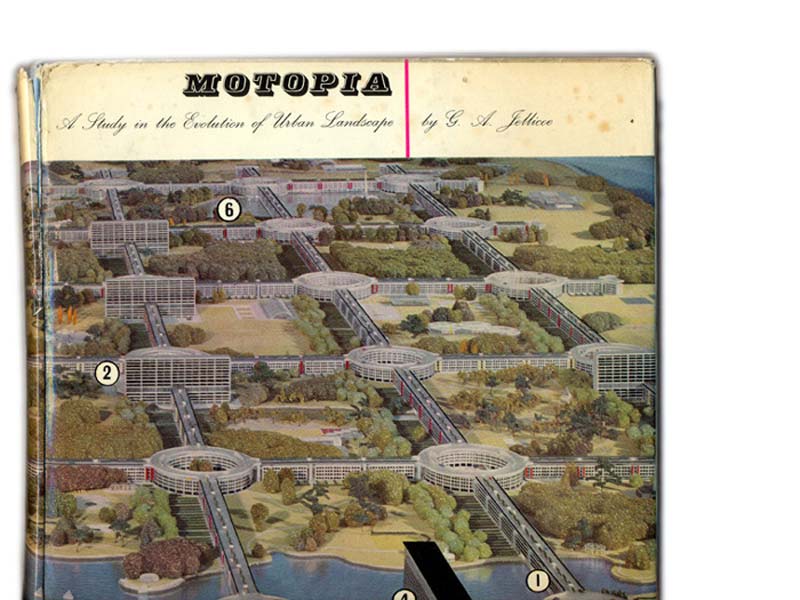
After Britain passed the New Towns Act after World War II, the government quickly chose land for new developements to accomodate the increasing population and several new towns were founded. Following the 1950s Baby-boom, during the 1960s a renewed interest grew for new towns; new propositions turned the subject into an opportunity to develop more avant-garde researches.
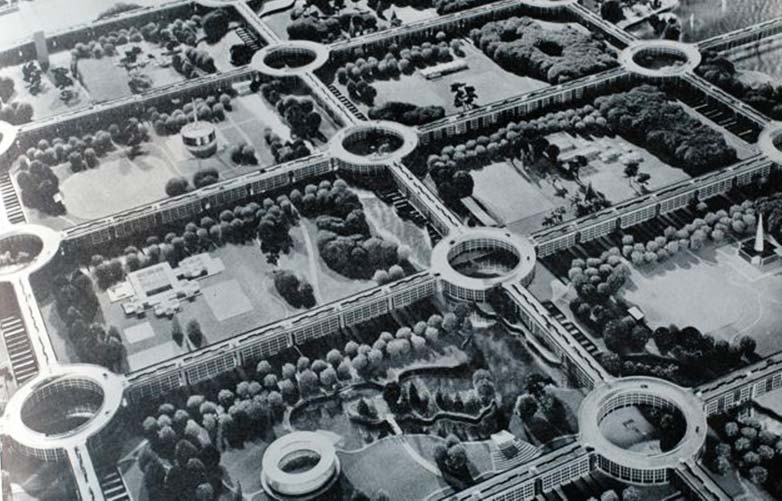
The drawings and theory behind Motopia came out in 1959 to reveal an ambitious proposal: illustrated by Gordon Cullen in the style of the “cities of the future” our of comic magazines, the project was intended to be realistic and even affordable in its development.
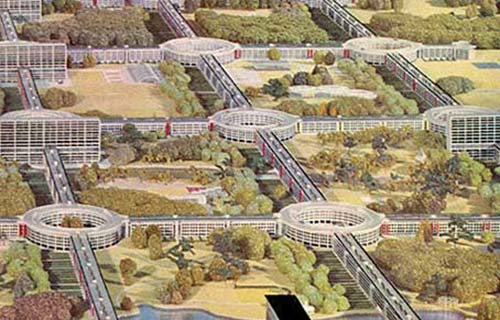
“Motopia is not only possible, but it is practical because it is economical”, Jellicoe told the Associate Press, “The dwellings would be no more expensive than housing for a similar population in tall buildings, such as those used by the London City Council in some of its developments.”
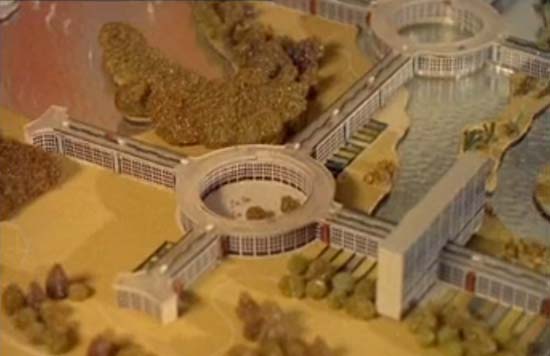
The town, thought for 30,000 inhabitants, also included a system of “water-buses” to help residents commute to work. The residents would have driven at the roundabout closest to their home, take an inclined leading to a parking space and then a lift to their home.
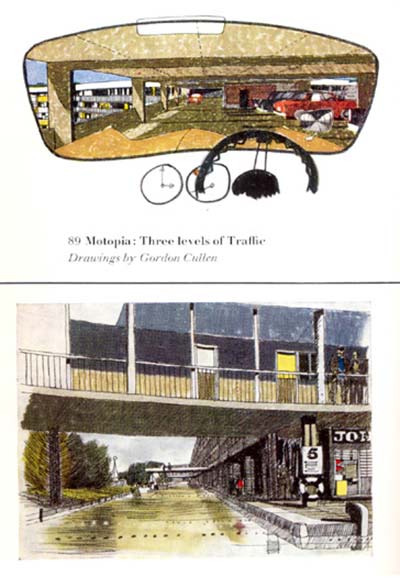
For more visuals please visit website
> via Socks
